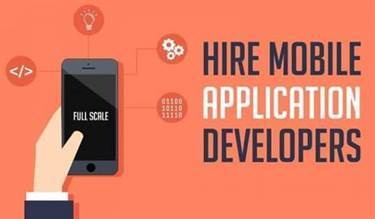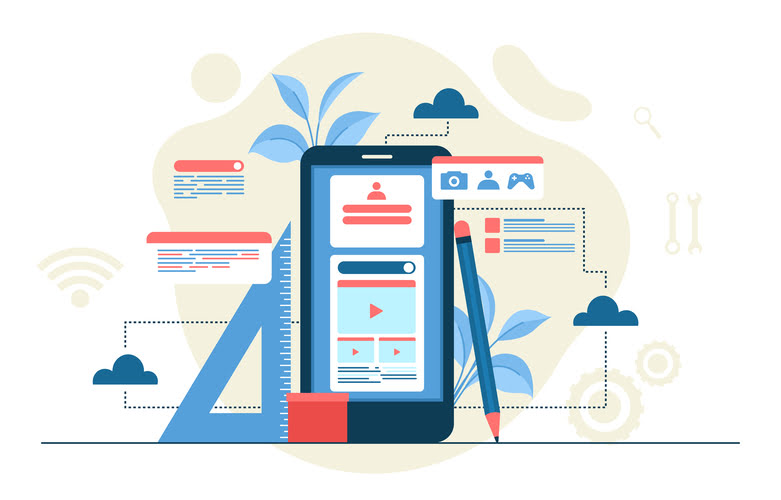Content
As we said, the main disadvantage of native apps is having to develop apps separately for each platform you want to cover. You’re looking at $100K to get first versions out on iOS and Android, and that’s a relatively conservative estimate. There are dozens of UI/UX differences that make users feel at home.
On the other hand, traditional IT uses an over-the-wall handoff of completed application code from developers to operations, subsequently running it in production. If any updates are required, a cloud-native architecture can handle them. But in 95% of cases, a webview app provides equal value at significantly lower expense and complexity. What’s important is to spend enough time thinking and calculating before you start building. There are many different directions in which you can take your app, all of which have their pros and cons.
Both of these approaches have their own fundamentals, course of action, pros, and cons. Therefore, we cannot certainly say if you should go with building a native app or a cross-platform one. A business may initially advantage from less development cost and time with the cross-platform approach.
Webview & Native Apps Vs Mobile Web
The microservices that are part of the cloud-native app architecture are packaged in containers that connect and communicate via APIs. A native application is a software program which is developed for a particular device, platform or operating system. That means hybrid apps will work on mobile operating systems such as iOS, Android, and Windows and also in browsers such as Chrome, Safari, Internet Explorer, and Mozilla Firefox. But fortunately, ad blockers for mobile apps is a less explored option, making native apps insusceptible to the same. Open an app and if it has lots of rectangles in its UI, then it’s most probably a native app.

As you only have to manage one codebase, you’ll probably require half the number of developers two native apps would have required. Or, with the same number of developers, a hybrid app could be published in half the time. Here we have provided an average cost to make a native mobile app.
Performance
Both the developing approaches (native and cross-platform) require testing the application before deployment to ensure that it remains bug-free. From a technical perspective, an application made for a single platform directly means that the UI is adjustable with most devices. At last, owing to continuous security updates in the official API and additional security of OS, native apps are safe from security breaches. In addition to that, the native approach has an official API, while the cross-platform approach has third-party integrations. Therefore, complete access to hardware and faster execution increases app performance and enhances user experience.
- The app has an extra step in Javascript it has to jump before executing the native code.
- These operating systems are predominantly the Android or iOS platforms.
- An executable program written for the operating system and hardware that it runs in.
- Coding an application for one specific platform, such as iOS, is called native app development.
- You don’t have to look very far for several examples of modern cloud native applications.
By building native, you don’t have to compromise with UI/UX that you hope will be user-friendly for all platforms. It’s often a good way to test out an idea before investing in a native mobile app. We have provided you with all the necessary information to help you determine whether to develop an app with the native approach or go for the cross-platform option. This was all about which app development option is best for your business.
How Is Cloud Native Used?
A CWPP detects and suggests corrections to prevent cybersecurity threats and keep production running smoothly. CSPM solutions also ensure that cloud resources and activities adhere to industry regulations and compliance mandates. If a resource is not compliant, security teams receive alerts to address them. CSPM not only give visibility and alerts, but also provide guided remediation or automated remediation to close security gaps and maintain golden standards and healthy security posture.
Finding a quality developer to hire as a freelancer or employee, is really, really hard. Expect to spend some real time and resources finding the right one. User Experience is the overall experience a user has when using your product, especially in terms of how easy or pleasing it is. They can be a great solution on Android, but on iOS support is still rather limited, meaning you’ll likely be missing functionality you need in the long run, especially push notifications.
Can Ios And Android Apps Work Together?
As being written in languages specific to the ecosystem of the platform, native applications can operate quicker, thus ensuring a greater user experience. The major distinction between hybrid and native applications is that hybrid apps are built across all platforms, while native apps are developed for specific operating systems. As contrast to having a unique app for each smartphone operating system, an app that is uniform across all platforms and functions identically well on each one.

For native applications, codes need to be developed separately for their respective platform. On the other hand, for the cross-platform approach, a single code runs on both Android and iOS. Businesses need to weigh down several points before deciding whether to go with native application development in android/iOS or choose the cross-platform approach. Native approach specifically refers to app development for a single platform. In the case of native android application development, the developers are different with the skillset of Java or Kotlin. Most companies prefer native application development because of the numerous advantages it offers as compared to web and cross-platform counterparts.
You’ll need to download them from specific app stores like the Apple App Store and Google Play. Once installed, you can easily access any application just by tapping its icon on your device screen. Gaming apps are generally created as native applications and apps like Netflix, that doesn’t require much of the system resources can be a hybrid or web application. Mobile web apps are written in HTML5, JavaScript, and server-side languages. Unlike native apps, there aren’t any software development kits to assist developers with mobile web app development.
With MobiLoud Canvas, you can convert any type of site into native mobile apps. Get a free a demo to learn how it works and if it’s a good fit for your site. We derived this cost by surveying our last 5 years of app development projects which used the native approach.
Tools And Services Required To Develop A Native Android App
It saves you time and money by reducing the codebase by about 95%. Combined with agile development, it offers more efficient app development. The React Native framework also comes with an array of open-source libraries that give you access to prebuilt components, which further accelerates development.
Users can interact with apps using actions and gestures they’re already familiar with if they follow particular standards. Cloud-Native Applications use software that logically separates the program, allowing it to execute without the need for physical resources. On the other hand, traditional application operators are sluggish to appropriately identify faults and frequently fail to deploy at scale due to the high level of complexity. As a result, when compared to cloud-native IT, there will be more disagreement, late delivery, and low staff morale in traditional IT. Traditional architecture is enormous and designed to meet terrible capacity predictions, with minimal flexibility to extend beyond design parameters to increase capacity.
Once installed on a device, the native shell uses a mobile WebView object to display web page contents. But they may have certain restrictions when it comes to accessing the system and hardware resources. The cost and time of development are progressive web apps vs native app lower as web apps are essentially websites. As more and more websites are using HTML5, there’s only a narrow division between the two. Although apps were originally invented back in 1994 by IBM, they were instead called “features” then.
Yes certainly, React Native, which is a cross-platform app development framework, can also be used to develop web applications. React Native for Web, is another sure-shot reason why use React Native, allowing programmers to utilize React Native Components and APIs on the web. Given that React Native is one of the most widely used frameworks for creating cross-platform mobile apps, this changes the game in the competition among mobile-first frameworks. With multiple types of security needs, it can become complex and difficult to manage multiple corresponding solutions. There’s limited visibility, and information must be exchanged between the different platforms.
Apps that take advantage of these features are called Progressive Web Apps. Even though you see Snapchat or Instagram, for example, running on both phones and looking very similar, they were actually built entirely https://globalcloudteam.com/ separately. Android is developed and supported by Google, often considered a more open platform compared to Apple. The experts from our team will be happy to provide a free consultation and clear your doubts.
A native app for BZ Review, built by MobiLoudPublishers and bloggers get plenty of customisation options — including colour scheme, style and branding. Plus all of the advantages of native apps, on both iOS and Android. As we’ve established, native apps can be expensive, especially if you’re looking to build a custom app from scratch, not to mention time-consuming . If you’re building two native apps, you’re going to be paying an iOS and Android developer.
The user’s experience in a social network app is quite important. Poor app performance is one of the biggest reasons to users leaving or uninstalling an app. For the most part, they deliver information in text or video form.
In the end, users get a high-end experience from a performance point of view as coders work on prescribed development guidelines. No to minimal changes in the app’s design occur while making these adjustments. Moreover, both Google and Apple have introduced prior guidelines to develop a native app for their respective platforms.